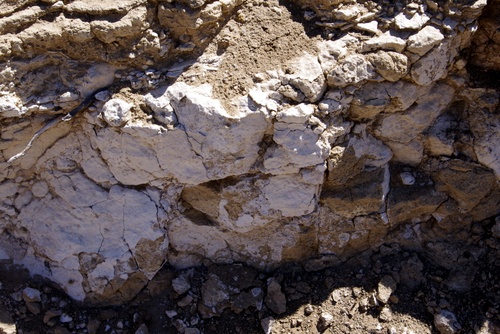Minerality is, for me, one of the most interesting concepts in the world of wine.
‘Minerality’ is a really useful descriptor; many of us use it frequently in our tasting notes. Yet it’s also a term that means different things to different people. I know what I mean when I encounter some characteristic in a wine that makes me think ‘mineral’, but I can’t be sure that when others use the term they are referring to the same thing.
And minerality may well be a sort of syndrome, like some medical conditions, when different underlying factors cause symptoms that look quite similar. I also suspect that it’s sometimes used as a way of praising a deliciously complex wine, in the same way that ‘long’ is often thrown into a tasting note when people really like a wine but have run out of more concrete descriptors.
A recent article by Sally Easton in the Drinks Business rather put the boot into minerality. She quoted the work of Jordi Ballester who has done lexical analysis on tasting notes where people use the term, and found that people mean different things by it. And she also quoted Alex Maltman, an academic geologist, who correctly pointed out that mineral ions are only taken up by vines at very low levels, and that we’d be unlikely to taste them in the wine.
But I think there’s more to be said on the topic.
Frequently, you will see on the side of a bottle of mineral water the different levels of mineral ions present in that water. These depend on the source of the water, and different mineral waters tend to have subtly different flavours if they are compared side-by-side. Presumably, these differences in flavour, subtle as they are, are down to the mineral composition, although there are plenty who will contend that most mineral ions don’t taste of anything.
If a soil has mineral ions in it, these will be taken up by the roots passively along with the water that the roots sequester. However, roots are also able to take up mineral ions selectively in certain circumstances. Some people object that the typical differences in mineral ion concentration, such as those found in different mineral waters, would not be noticeable against the backdrop of the other flavours present in wine. However, the levels present in wine seem to be considerably higher.
‘Minerals can be detected while tasting a wine,’ says Olivier Humbrecht, one of Alsace’s leading winegrowers, famous for his advocacy of biodynamic viticulture. ‘It is the fraction on the palate that makes the wine taste more saline or salty. High acids or high tannins do not mean that the wine has lots of minerality. High salt contents make the acidity more “savoury” and therefore less aggressive. Good minerality makes salivate and makes one want to have another sip or glass or bottle.’
Gerd Stepp, a consultant winemaker, has some interesting perspectives of minerality. He broadly falls into the literalist camp. ‘For me there are two forms of minerality that influence a wine’s qualities and characteristics,’ he explains. ‘Firstly, perhaps most obviously, the wine’s mineral content, which is about taste and texture when tasting a wine. It’s much like when drinking mineral water of a high mineral/salt content, there is a flavour/taste and an almost ‘osmotic’ experience, perhaps similar to drinking sea water, just much less concentrated and less salty.’ Stepp thinks that mineral waters taste differently, and can sometimes even seem a little salty, depending on to source.
Stepp notes that according to his reference books the mineral content of wines fluctuates between 1.5 g/litre and 4 g/litre. ‘It seems the soil’s exchange capacity of ions correlates with the mineral concentration of a wine,’ he states. ‘Also, a cold-stabilised wine has lower potassium content than the same wine unstabilized, and it tastes different and has less flavour, perhaps even less complexity.’
For Stepp, there is also a second form of minerality. ‘I am certain there is an influence on the wine’s flavour characteristics through the geology/soils where the grapes are grown, which correlates to the terroir’s unique minerality,’ he claims. ‘I understand researchers trying to prove that vines don’t actually take up minerals from the soils and that these minerals aren’t in the finished product. But how can it be explained that wines made from the same grape variety, vintage and region have such different qualities depending on the soils? It must have an influence, detectable or not. Also, where would those 1.5–4g/L of minerals come from? But I don’t believe that we just taste the actual minerals from the soils, it is definitely much more complex.’
There is a very interesting pair of scientific studies in support of this notion of minerality in wine. Back in 2000, a plant researcher from Germany, Andreas Peuke, grew Riesling vines in pots containing three different soils from Franconian vineyards: Loess, Muschelkalk (sea shell lime) and Keuper. He collected sap from the vines and analysed its chemical composition, and found differences among the different soil types. In Muschelkalk soil, carbon, nitrogen, and calcium were present in the greatest concentrations. Sulfur, boron, magnesium, sodium, and potassium were greatest in Keuper, and the concentrations in Loess soil were intermediate. Aqueous extraction of the soils resulted in a two-fold greater concentration of total solutes in Keuper extract compared with Muschelkalk, and more than threefold than in Loess.
A few years ago, Californian winegrower Randall Grahm carried out some interesting experiments. In his quest to try to understand minerality better, he actually put some rocks into tanks of wine. However, in this case the rocks were in a wine environment at low pH, and are therefore likely to release more ‘minerals’ than if they had been in the ground. And the rocks also had the side effect of raising the pH of the wine, which can change the flavour. ‘Our experiments were incredibly simplistic and gross in comparison to the very subtle chemistry that occurs in mineral extraction in real soils,’ Grahm recalls. ‘We simply took interesting rocks, washed them very well, smashed them up and immersed them in a barrel of wine for a certain period, until we felt that the wine had extracted some interesting flavors and we were able to discern significant differences between the various types.’
Grahm saw major changes in the texture and mouthfeel of the wine, as well as dramatic differences in aromatics, length and persistence of flavour. ‘In every case, low doses of minerals added far more complexity and greater persistence on the palate. It is my personal belief that wines richer in minerals just present way differently.’ He adds that, ‘they seem to have a certain sort of nucleus or density around their center; they are gathered, focused, cohered the way a laser coheres light. It is a different kind of density relative to tannic density, somehow deeper in the wine than the tannins.’
So, I reckon there is still some life in this literalist understanding of minerality. More to come…
12 Comments on The mystery of soils and wines, part 2



Great post.
I know it’s about Napa, but have you read ‘The Winemaker’s Dance’?
So if “minerality” is so useful, and you know what you’re pertaining to when you use it but not what others might mean, is that not a particularly wishy-washy, not at all useful term? I like the point about it being like a medical condition however; think you’ve caught a cold with this one!
Oh, forgot to mention that when you say “minerality” is often a word used to describe “a deliciously complex wine”; there are a lot of wine professionals who’d admit to using it when a wine has an almost complete lack of fruit definition, i.e. tastes of pretty much nothing (much like the mineral waters you allude to).
Interesting! I wonder if adding rock chippings can be compared to oak chippings…
But one could run an experiment with a few wines and ask people to rate the minerality on a scale of 1-10 and then see what correlation there was. I can’t believe it’s as random as some of your sources suggest.
I wonder how you should also account for the effect of foliar sprays. We work hard on plant nutrition which means that we have minimal fungicide usage and so commonly spray things like iron and magnesium which are present in the soil but as we have a high PH is locked in. I also suspect that frequently “mineral” notes are due to sulphur compounds – either produced during fermentation or addition.
Why doesn’t anyone consider the things we know to be true about different soils, as Professor Maltman has suggested. We know that different soils have different physical attributes which affect water retention and drainage, heat radiation and light reflection, the roots’ ability to penetrate, etc. We know these attributes impact the growth cycle of the vine and its fruit. Why not look here for potential impacts on taste?
Additionally, why does no one discuss what it might be that makes chalk smell like chalk, or makes flint smell like flint. If the mineral itself doesn’t have a smell, what is it that smells? Perhaps whatever it is, is somehow getting into the wine.
I agree with Guy. I think minerality could be ferment related. we have conducted experiments on the same batch of juice, fermenting half naturally and the other half with a commercial yeast. The natural yeast portion is always more ‘mineral’ compared to the conventional ferment, which is more fruity-estery. Adding rocks to wine? not sure what this proves?
I was thinking along Kent’s lines that the physical attributes rather than the chemical components of the soil make a big difference.
Also in an article on the flavour of rocks and minerals I loved the ironic use of “concrete descriptors”.
“So, I reckon there is still some life in this literalist understanding of minerality.”
Really??? Based on Grahm’s “experiment” (loose definition here I expect).
A statement based on that bit that Grahm (whose wines I generally quite like) did, seems to suggest that there is a sort of translocation of actual minerals into the fruit on the vine (or presumable any fruit baring plant. By my understanding, that is just plain wrong.
Nice idea, but one with nothing behind it
The late Andrew Sharp in his “Wine Taster’s Secrets” noted that “minerality” appears in wines with low alcohol and high acidity. Basically that mineral like tang is likely a result of a wine’s ph factor. Certainly Ph and the interplay with a number of other components in wine.
water retention and drainage, heat radiation and light reflection, the roots’ ability to penetrate, etc. We know these attributes impact the growth cycle of the vine and its fruit. Why not look here for potential impacts on taste.
Another minerality sceptic.
http://www.decanter.com/news/blogs/expert/583959/jefford-on-monday-the-party-s-over